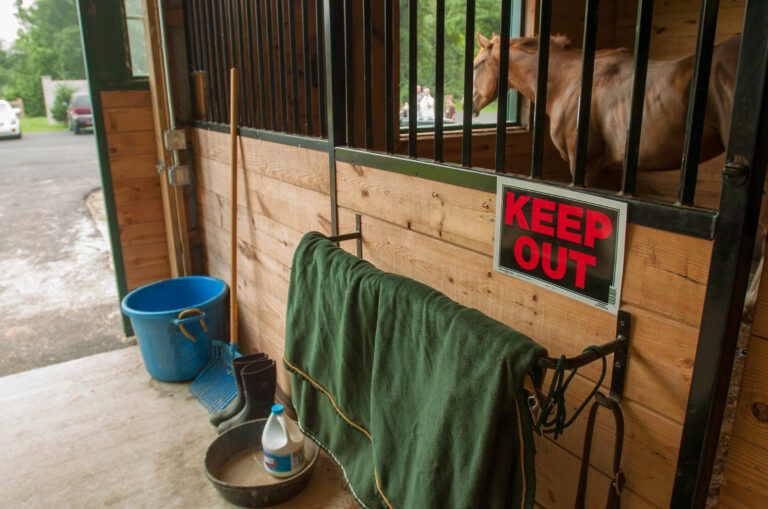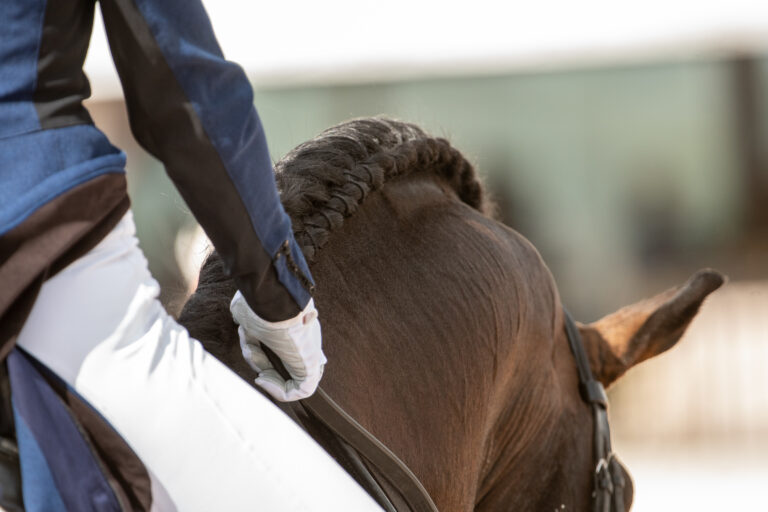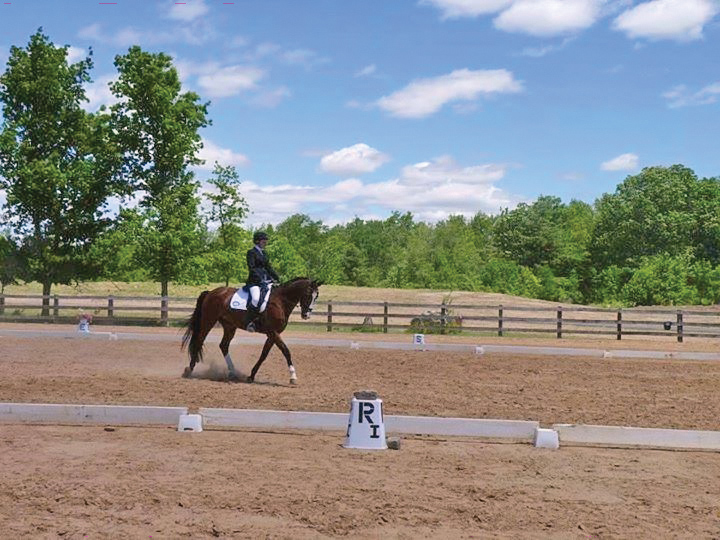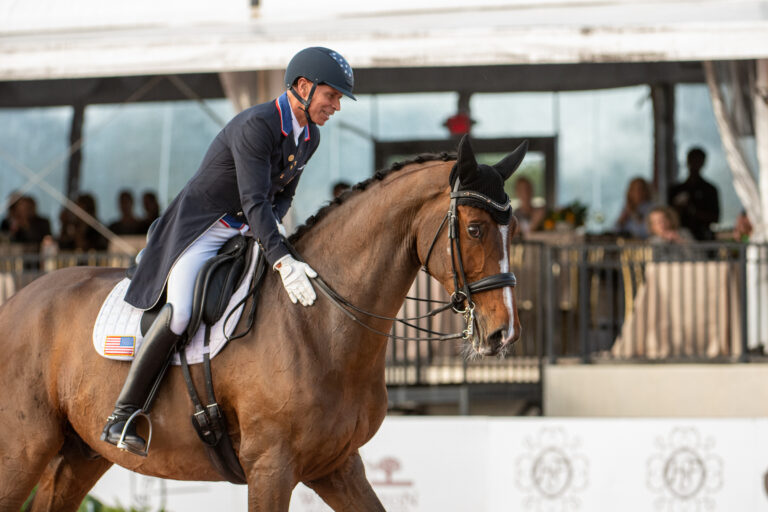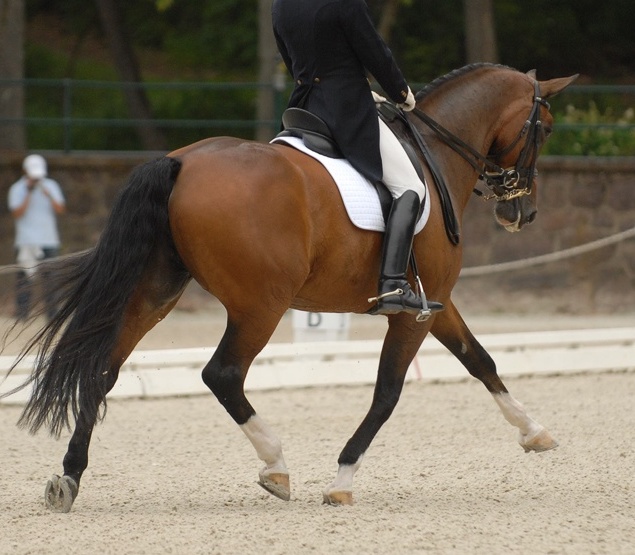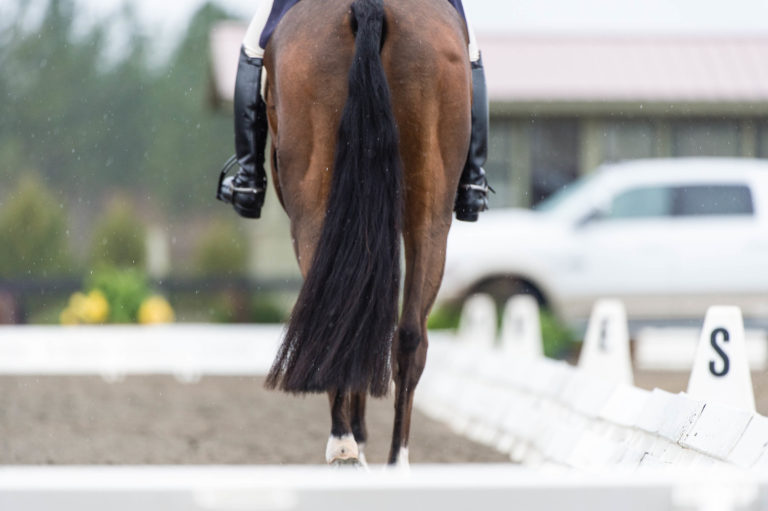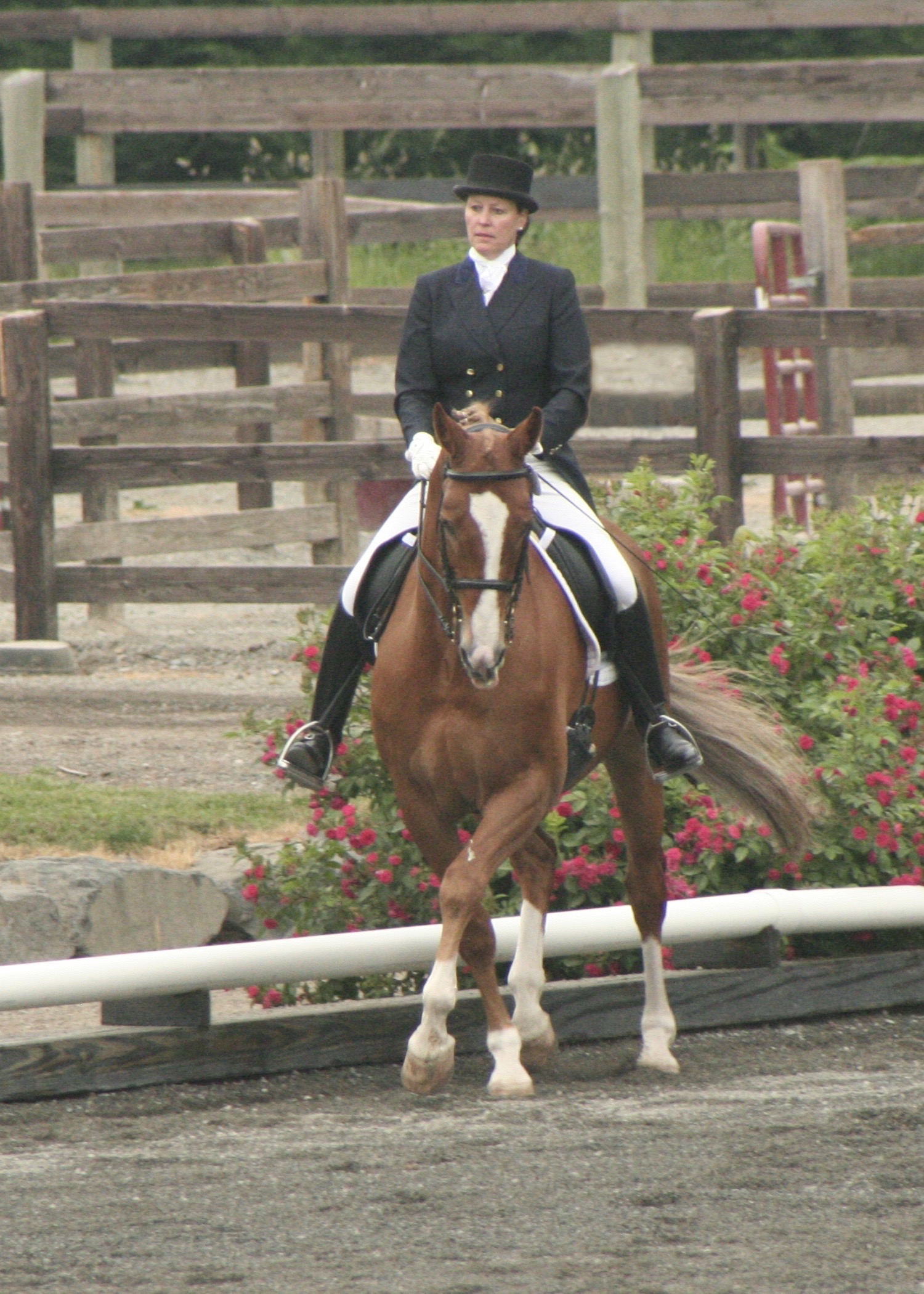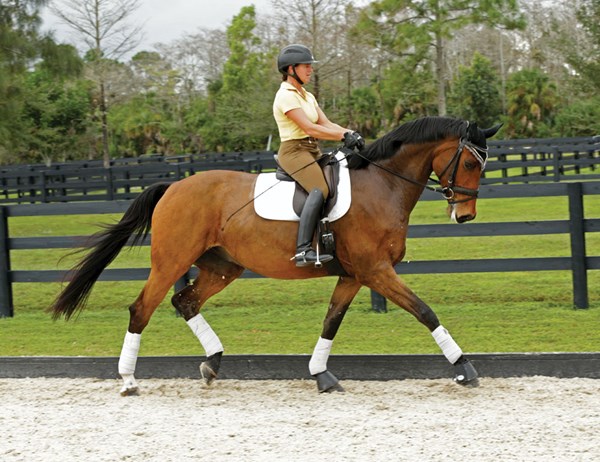Sixteen years after its last world championship silver medal, the U.S. finally did it again today at the Tryon International Equestrian Center, with a well-orchestrated program that culminated in a bravura anchor effort by Laura Graves and Verdades.

Germany earned its perennial gold with a score of 242.950 percent in a format based on the best three scores of the four-member teams. The U.S. was only 9.814 percentage points behind the German dynamo, a big step from the last WEG, where it finished fourth but showed promise.
Great Britain, with three up-and-coming horses, was third on 229.628, followed by Sweden on 229.456. The battle for the second and third steps on the podium was tough with the teams so close, but Graves’ grit and Verdades’ cooperation clinched the coveted honor for the U.S. It’s doubly meaningful, because with it came Olympic qualification, granted to the first six teams in the competition. That means American riders won’t have to worry about scrambling to qualify for the Tokyo Games in 2020 and can just focus on what they need to do in the effort to win a medal in Japan.
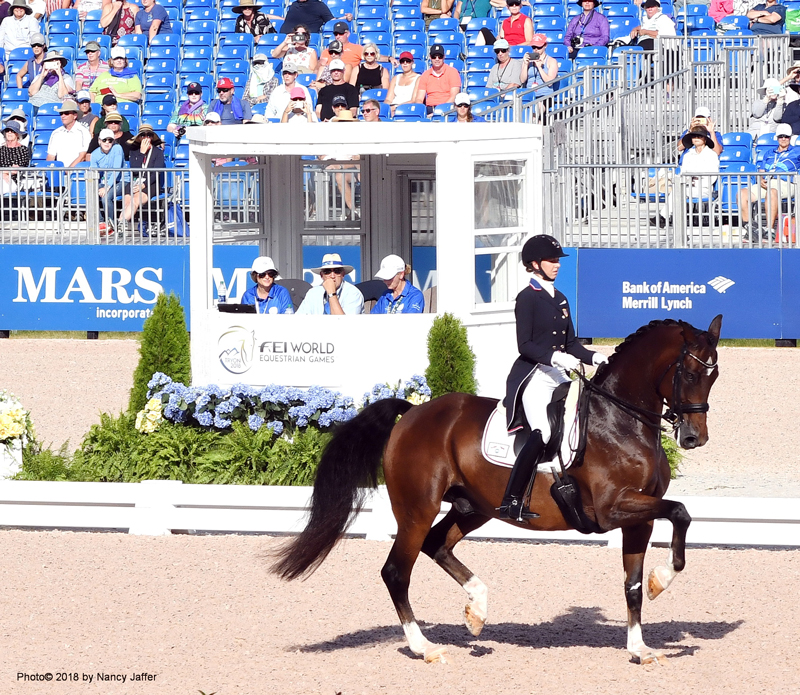
Graves was feeling “under the weather” before her ride this afternoon. The oppressive heat and humidity took their toll on horses and humans, but Graves noted she got an adrenaline boost from the challenge she faced. To clinch silver, Graves needed a mark of approximately 79 percent. She did even better than that, earning 81.537 percent, second only to world number one Isabell Werth of Germany on Bella Rose with a total of 84.829.
Like Kasey Perry-Glass (eighth on Dublet with 76.739 percent) and Adrienne Lyle (14th on Salvino with 74.860 percent) Laura is trained by Debbie McDonald, the key player on the 2002 silver medal squad during her riding days with Brentina. McDonald will take over from retiring chef d’equipe Robert Dover at the end of the year.
Click on this video to hear Laura’s thoughts after the medal ceremonies.
“None of this could have happened without Deb, she’s been my right hand through this whole journey, from six years ago to now and I am so happy she’s going to be taking the reins after me and going on with the adventure with this group,” said Dover.
Though there were “what-if” musings in the months before the WEG that the U.S. might overtake Germany in this competition, even the perennially optimistic Dover knew such conjecture was a bit of pie in the sky. But that won’t always be the case.
“We’re definitely pushing toward that direction. We still need to keep advancing the lower end of the pyramid, where our kids and young horses are getting the same type of world class competitive and training programs behind them to produce the kind of excellence that keeps going to the top, no matter what,” said Dover.
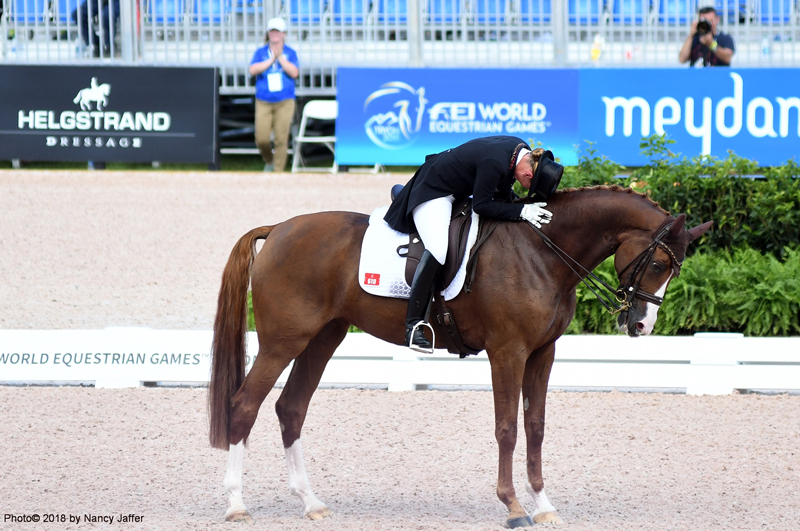
The emotion of the day was widespread, starting with Werth, who made a splash at the 2014 WEG with Bella Rose, only to have her out of competition with an injury for nearly four years before starting back this summer. Werth made what really was a controversial decision to leave Weiheigold OLD, the number one ranked horse in the world, at home and bring Bella to Tryon instead.
The 14-year-old chestnut Westfalen mare, who has “charisma” and a “special shine” didn’t let Werth down.
“She doesn’t want to make a mistake. She’s full of power and energy,” said Werth, who has more Olympic medals than any other equestrian in any discipline.
Charlotte Dujardin, who held every dressage record with Valegro, was away from the spotlight when that horse retired in 2016. But the British rider is back now with Mount St. John Freestyle, at age nine the youngest horse in the competition. The mare, known as “Mrs. Valegro,” finished fifth on 77.764 percent.
“It’s only her sixth grand prix. She’s very inexperienced,” said Dujardin, admitting she had no idea how the horse would go.
While there are still mistakes, “they are easily fixed,” Dujardin observed, noting next year she’ll be able to ask for more from the horse.
The architect of Britain’s dressage success, including team gold in the 2012 London Olympics, is Dujardin’s mentor, the brilliant Carl Hester, as good at riding as he is at planning. His mount, Hawtins Delicato, is British-bred—a rarity at the highest level of the sport—and had never shown outside Britain. But during the morning, he led the standings briefly with an impressive 77.283 percent performance that made the most of an animal foaled just three miles from Hester’s farm.
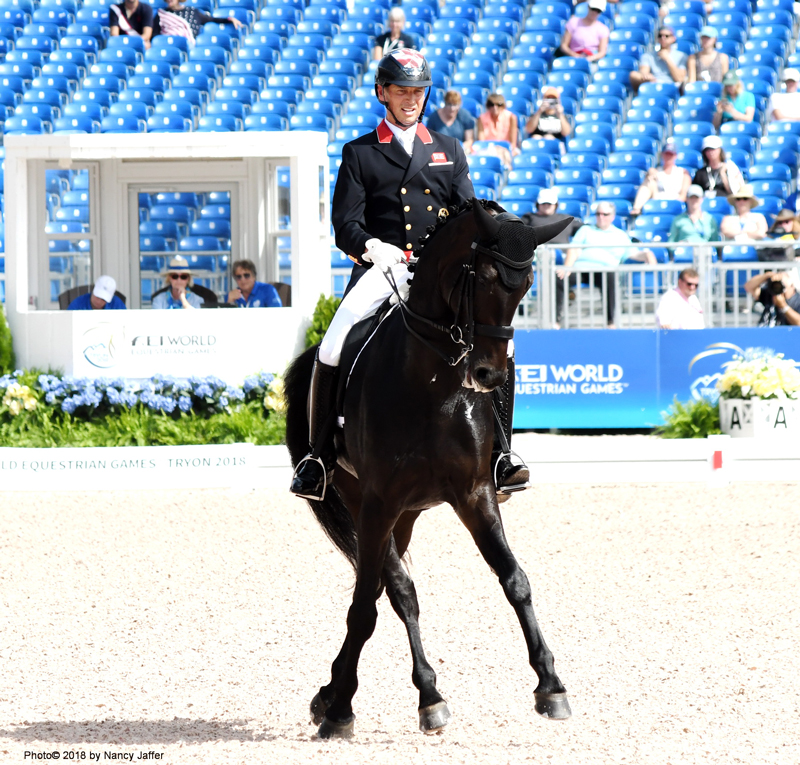
The rider was happy that “the plan we did this year worked…we didn’t compete our horses very much, we stayed in England.” With young horses, he told Dujardin, “we can’t campaign all around Europe and fly them to the WEG and expect them to be on form.” Hester pointed out that the sport in his country is more than Valegro, noting the performance in Tryon proved “that we still have depth in British dressage.”
The top riders will face off once again tomorrow in the Grand Prix Special. For Perry-Glass, that’s optimum, since her horse is well-suited to that test. She and the Danish-bred Dublet have an awesome partnership, and she makes sure the horse has plenty of rest (he took a long break, missing most of the winter show season) and incorporates trail rides into his training regimen to keep him fresh.
Hear Perry-Glass talk about her horse by clicking on this video link.
It wouldn’t be surprising to see the same U.S. team in Tokyo. Steffen Peters’ mount, Suppenkasper, actually was bought with an eye toward the 2020 Olympics, but he had to fill in here for his stablemate, Rosamunde, when she wasn’t quite herself after the trip from California. Although Steffen had the team’s drop score, he was 18th with a mark of 73.494 percent, a total that anyone on the team a decade ago would have coveted.
For Grand Prix results, please click on this link.
Click here for complete dressage coverage, event highlights, and a behind-the-scenes experience during #Tryon2018. Coverage of the FEI World Equestrian Games™ Tryon 2018 is brought to you by Vita Flex.


